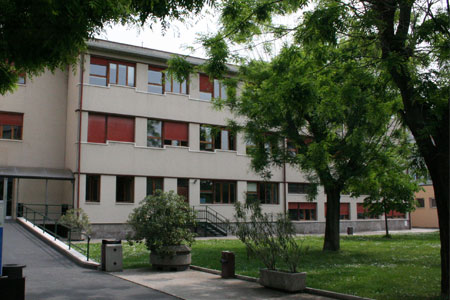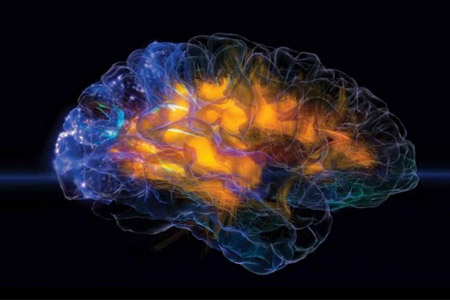Notwithstanding a massive effort and investment in improving cancer therapy, most of the progress made towards reducing overall mortality has been achieved
through early diagnosis, underlining the importance of the application of the prevention to cancer. Cancer cells are characterized by the capacity of the
neo-formation of blood vessels to ensure oxygen and nutrient supply to themselves (angiogenesis), the reduction or the loss of the possibility to proceed into
programmed cell death (apoptosis) and the capacity to invade into the normal tissues (metastasis). Any treatment to counteract angiogenesis and metastasis, and to
induce apoptosis, may represent a powerful tool for prevention or therapy of neoplasia. Recent data indicate that nuclear transcriptional factors such as NF-kappaB
and signal transducers and activators of transcription (STATs) play a critical role in these events. Indeed, NF-kappaB and STAT3 have been involved in the induction
of angiogenesis and the inhibition of apoptosis, respectively. Furthermore, STAT3 regulates breast cancer progression, development and differentiation and/or
acquisition of the metastatic phenotype. Another key family of proteins exerting a fundamental role in neoplasia is the proteases.
Phytochemicals or phytocompounds are under increasing scrutiny for their potential in cancer therapy and cancer chemoprevention. We recently observed that most,
if not all, compounds with known or putative cancer chemopreventive activity show significant anti-angiogenic and pro-apoptotic activities, in particular polyphenols
and terpenes. The Verona unit has identified terpenes present in laurel leaves exerting anti-STAT3/pro-apoptotic activity. The Padova group has found that some
polyphenols (epigallocatechin-3-gallate, hyperforin) inhibit the activity or the expression of matrix metal proteases, key enzymes for invasion (angiogenesis) and
metastasis. The Varese group has reported that xanthohumol and deguelin exert anti-angiogenesis activities associated with inhibition of the NF-kappaB/Akt
pathways.
Based on these considerations, the present proposal mainly purports the extension of chemoprevention to the microenvironment by the use of phytochemicals that
display anti-angiogenic, anti-inflammatory and pro-apoptotic activities, delving into the mechanisms of action to identify class effects. In our research project team
there is extensive experience regarding chemistry of phytocompounds. Unit of Salerno has extensive expertise in isolation and structure elucidation of secondary
metabolites and will contribute to the proposal by providing the other RU with compounds structurally related to plant secondary metabolites with reported
chemopreventive and/or anti-cancer activity and by performing the phytochemical investigation of plants with potential anti-cancer activity.
Unit of Padova is developing derivatives of active phytocompounds protected at the sites of metabolic modification and with improved solubility characteristics or
"mitochondriotropic" derivatives that will be examined also by other groups.
Briefly, the effects of these phytocompounds (native and modified) on various biochemical events correlated to apoptosis, angiogenesis and metastasis will be
examined in a number of tumour models available in this project's team:
in vitro models, including human prostate carcinoma cells, metastatic breast cancer cells obtained directly from patient biopsies, isolated leukocyte populations from
peripheral blood or patient tumors such as leukemic cells (Acute myeloid leukemia (AML) and Chronic myeloid leukemia (CML)), in vitro angiogenesis models with
endothelial cells.
in vivo models, The TRAMP model of prostate carcinogenesis and the MMTV-neu model of breast cancer, well known autochthonous transgenic animal modes, as
well as a new novel model of spontaneous myeloid leukemias. The results will allow assessment of potential clinical applications in vivo.
Successively, functional relationship between biochemical and anti-tumour activity of phytocompounds, identification of their molecular target(s) and
structure/function relationship study of each compound will be studied in Verona, Salerno and Varese units by proper competence available in each unit:
a) Verona-Surface Plasmon Resonance (SPR) to analyze the direct interaction between phytocompounds and target molecular proteins;
b) Salerno-SPR, MS and NMR analysis to investigate the interactions between phytocompounds and proteins critically involved in their mechanism of action;
c) Padova-pharmacokinetics by blood and tissue analyses, comparative toxicology, anti-angiogenic and anti-cancer efficacy of prodrugs in mice;
d) Varese-phenotype characterization via multicolor flow-cytometry analysis and cell sorting;
e) Roma-proteomic analysis.
All these studies will give us a base for the identification of new tumour prevention and/or therapeutic drugs.







